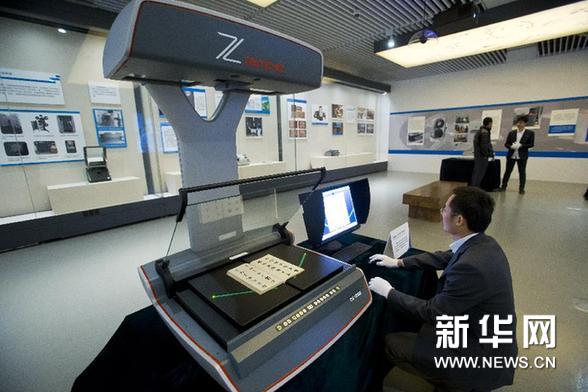 |
|
A scanning machine for filming documents can be seen at the exhibition. [Photo/xinhuanet.com]
|
The National Library of China and China National Microfilming Center for Library Resources (CNMCLR) are jointly holding a free exhibition of microfilmed library documents from Nov 26 to Dec 21.
Microfilm is a special technology for document perseveration, on which documents and writings can be recorded on microfiche sheets, so that large amounts can be stored easily.
At present, CNMCLR and 25 libraries in China are using this technology to record precious documents. Nearly 150,000 ancient books have been microfilmed and the length of the microfilms stretches nearly 3,400 km - that is longer than the distance between Beijing and Bangkok.
Zhang Yang, deputy director of the CNMCLR said microfilm can record the original look of brittle books. It can be kept for more than 500 years and its content can’t be erased. Microfilm is safe and reliable, as one of the effective options to save documents. "We are preparing to start pilot programs with several libraries and then promote microfilm to libraries nationwide," Zhang said.
This exhibition includes traditional black-and-white microfilmed documents, color microfilmed ancient books and digital versions. Visitors can also learn how books are microfilmed.
"Compared with digital information, microfilm can be stored longer," said Ma Shugui, executive director of the Chinese Archive Society. Hard disk and other data storage mediums are easily damaged. Internationally, people incline to use both microfilm and digital storage and make microfilm the principal means for preserving endangered information.
"Under the new situation, we need to integrate the microfilm with digital technology and discuss various options to convert digital documents to microfilm," said Han Yongjing, curator of the National Library. "We will also create a system to change microfilm to digital images to meet the various demands of readers."
